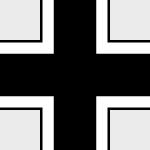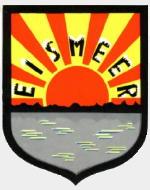Dragon DRW50163 Limited Edition German Messerschmitt Bf 109G-2 Fighter with Compass Platform - Heinrich Ehrler, 6./Jagdgeschwader 5 'Eismeer', Petsamo, Finland, March 1943 (1:72 Scale)
"Guns before butter. Guns will make us powerful; butter will only make us fat."
- Reichsmarschall Hermann Goering, Head of the German Luftwaffe
 Numerically the most abundant fighter produced by either side during WWII, the Messerschmitt Bf 109 formed the backbone of the Jagdwaffe on both the eastern and western fronts, as well as in the Mediterranean and North Africa. Of the eight distinct sub-types within the huge Bf 109 family, the most populous was the G-model, of which over 30,000 were built between 1941-45. Despite its production run, only a handful of genuine German Bf 109s have survived into the 1990s, and with the serious damaging of the RAFs G-2 at Duxford in October 1997, only the German-based MBB G-6 and Hans Ditte's G-10 (both composites) are currently airworthy.
Numerically the most abundant fighter produced by either side during WWII, the Messerschmitt Bf 109 formed the backbone of the Jagdwaffe on both the eastern and western fronts, as well as in the Mediterranean and North Africa. Of the eight distinct sub-types within the huge Bf 109 family, the most populous was the G-model, of which over 30,000 were built between 1941-45. Despite its production run, only a handful of genuine German Bf 109s have survived into the 1990s, and with the serious damaging of the RAFs G-2 at Duxford in October 1997, only the German-based MBB G-6 and Hans Ditte's G-10 (both composites) are currently airworthy.
Pictured here is a 1:72 scale replica of a German Messerschmitt Me109G-2 fighter with compass platform that was attached to 6./JG 5 'Eismeer' during March 1943. Comes with certificate of authenticity.
Sold Out!
Dimensions:
Wingspan: 5-1/4-inches
Length: 5-inches
Release Date: June 2006
 Historical Account: "The Struggle Continues" - During the summer and autumn of 1941, the Finnish army was on the offensive, retaking territories lost in the Winter War with the Soviet Union. The Finnish army advanced even further, especially in the direction of Lake Onega, (east from Lake Ladoga), leading to the occupation of Russian East Karelia (it never had been a part of Finland - or before 1809 of Sweden-Finland). This caused Great Britain to declare war on Finland on December 6th. The German-Finnish troops in Northern Finland were less successful, failing to take the Russian port city of Murmansk.
Historical Account: "The Struggle Continues" - During the summer and autumn of 1941, the Finnish army was on the offensive, retaking territories lost in the Winter War with the Soviet Union. The Finnish army advanced even further, especially in the direction of Lake Onega, (east from Lake Ladoga), leading to the occupation of Russian East Karelia (it never had been a part of Finland - or before 1809 of Sweden-Finland). This caused Great Britain to declare war on Finland on December 6th. The German-Finnish troops in Northern Finland were less successful, failing to take the Russian port city of Murmansk.
In September 1941, the Finnish army took defensive positions. This led to a long period of relative calm in the front line, lasting until 1944. During this period, especially after the major German defeat in the Battle of Stalingrad, intermittent peace negotiations had taken place. These negotiations did not lead to any settlement.
On June 9th, 1944, the Red Army launched a massive attack against Finland. The fact that the enemy had vast numerical superiority and had managed to surprise the Finnish army, led to a retreat approximately to the same positions as Finns were holding at the end of the Winter War. Eventually the Soviet offensive was fought to a standstill (see Battle of Tali-Ihantala) while still tens or hundreds of kilometers in front of the main Finnish line of fortifications, the Salpa Line.
The dire situation in 1944 had led to Finnish president Risto Ryti giving Germany his personal guarantee that Finland would not negotiate peace with the Soviet Union. In exchange Germany delivered weapons to the Finns. However, after the Soviet invasion was halted, Ryti resigned. Due to the war, elections could not be held, and therefore the Parliament elected Mannerheim, the Finnish commander-in-chief, as the president and charged him with negotiating a peace.
The Finnish front had became a side show for the Soviet leadership, as they were in a race to reach Berlin before the Western Allies. This, and the heavy casualties inflicted to the Red Army by the Finns, led to withdrawal of most troops from the Finnish front. On September 4th, 1944, a cease-fire was agreed, and the Moscow armistice was signed on September 19th. In the armistice agreement Finland was obliged to expel German troops from the country. This would lead to the Lapland War.


